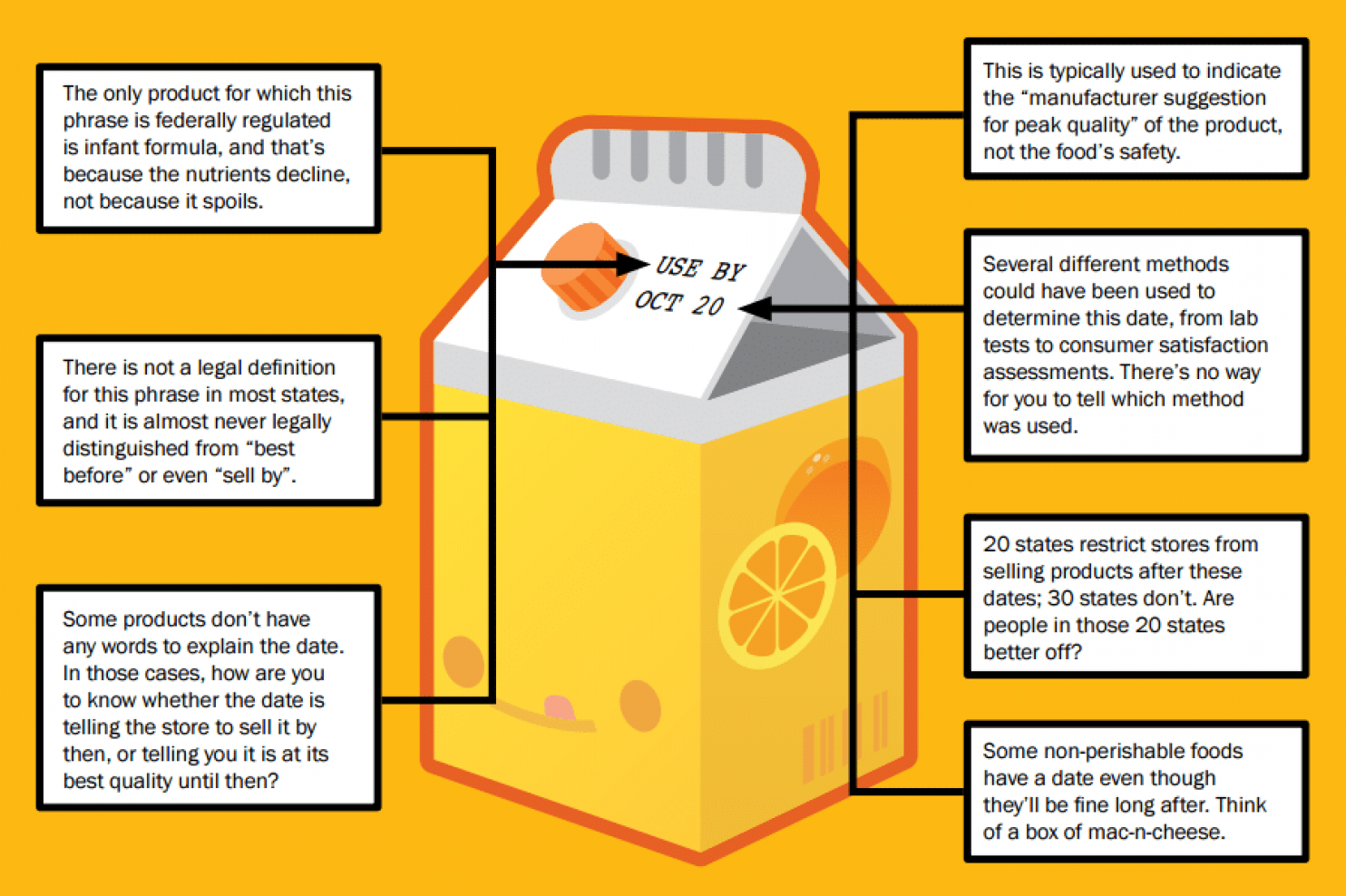When reading packaging design graphics, most people have no clear understanding of what “sell by” dates on food packaging are trying to tell them. But after 40 years of guessing, the grocery industry has decided to clarify the terms.
On Wednesday, the Food Marketing Institute and the Grocery Manufacturers Association, the two largest trade groups for the grocery industry, released a statement that they’ve adopted standardized, voluntary regulations to clear up what “use by” date labels mean. Where manufacturers now use any of 10 separate label phrases, ranging from “expires on” to “better if used by,” they’ll now be encouraged to use only two: “Use By” and “Best if Used By.” Being clear in this instance is highly important, that is why food marketing agencies like Ceres PR, and others, are needed to make customers understand.
The first is a safety designation, meant to indicate when perishable foods are no longer safe to consume. “Best if Used By” is a quality descriptor – a subjective estimate of when the manufacturer thinks the product should be consumed for peak flavor.
Studies have shown that many consumers believe they signal whether a product is okay to eat. In fact, it’s totally fine to eat a product even after its so-called “expiration date”.
These dates typically indicate one of two things: a message from the manufacturer to the grocery store, telling the store when the product will look best on shelves, or a subjective measure – often little more than a guess – of when consumers will most “enjoy” the product. Methods for setting those dates have been left to manufacturers, rather like the phrasing of the labels themselves. But when consumers see a date labeled “use by” (or, even worse, not labeled at all) they often tend to assume that it’s a food-safety claim, regulated by some objective standard.
Professionals have been concerned for years that people interpret date labels as a sign that food is no longer safe to eat, resulting is huge amounts of food waste. An industry survey discovered, 91 percent of consumers have mistakenly thrown away food due to this misunderstanding, when the label only signals a guess at the date of peak quality.
While FMI and GMA are urging manufacturers and retailers to make the language changes on packaging graphic designs right away, they have until July 2018. Even then, the standards are voluntary, so there’s no guarantee they will be adopted by all brands.
Some states also have labeling regulations that preempt the industry standards. In Montana, for instance, milk must come with a “sell by” label. That means milk in the state will still say “sell by,” even if every other product gets the new labels.
Many manufacturers have signaled their appreciation for the changes, including Walmart, the largest seller of American groceries. And both FMI and GMA are hoping to see widespread adoption, since the standards were written by a group of active food industry professionals, not politicians.
Ultimately, there is no denying that the packaging industry has come a long way in recent years. For example, right now, facilities that depend on shrink wrapping are able to use portable heat guns and other heat shrink plastic tools to reduce waste and secure the packaging for goods more efficiently. It will, therefore, be interesting to see what else the future has in store for the packaging industry.
According to NRDC, Americans throw $218 billion worth of food away each year. The anti-food-waste coalition ReFED estimates that 398,000 tons, or $1.8 billion, could be saved through standardized date labels. Let’s see how we do!

